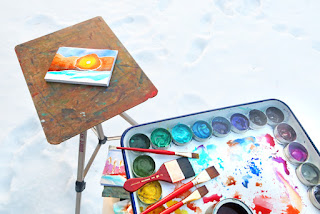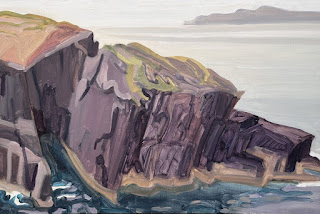A Twelve Minute Painting
Timed from start to finish, 12 minutes, of potted tulips from my grocery store, outside at home in Shapleigh, Maine on March 18, 2024, painted March 22, 2024, 7" x 5" (w x h), Daniel Smith, Schmincke Horadam, and Winsor & Newton watercolors, selected for light fastness and permanence, and Uniball waterproof fade proof ink on 140 lbs. Fabriano Artistico cold press rough 100% cotton extra white watercolor paper, framed.
$150























































